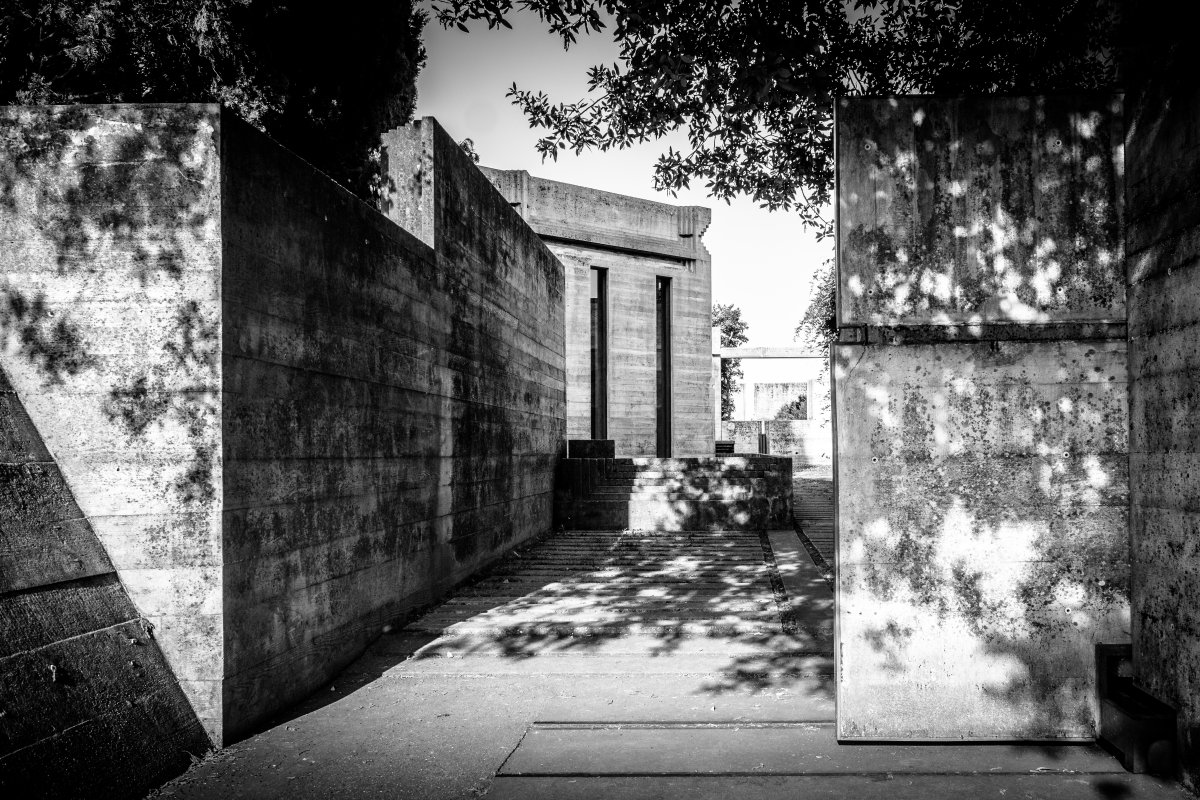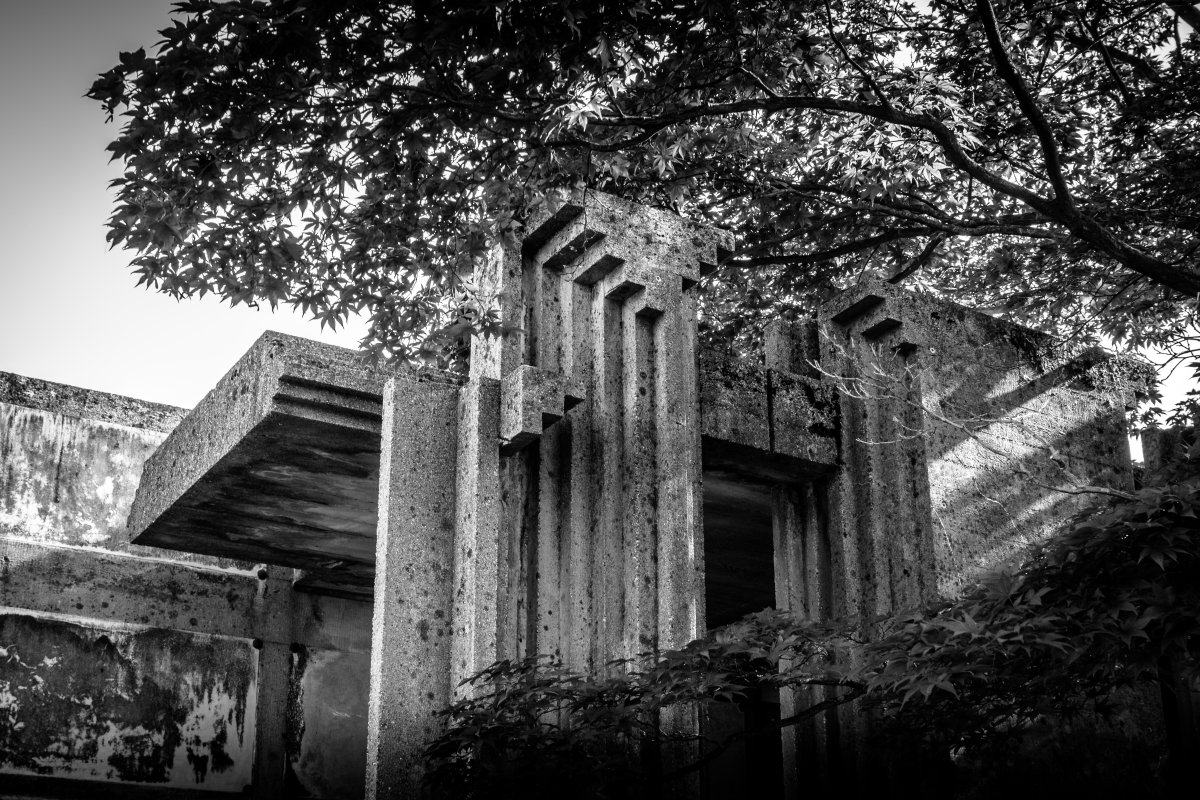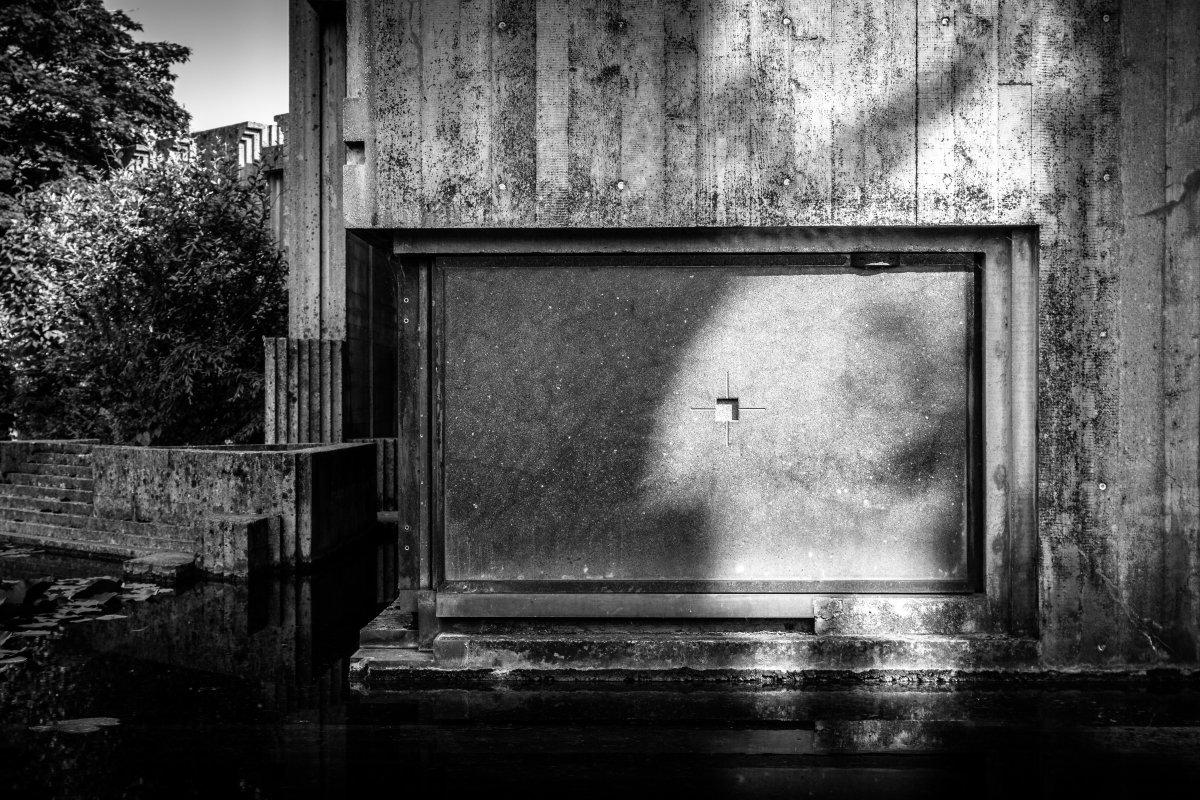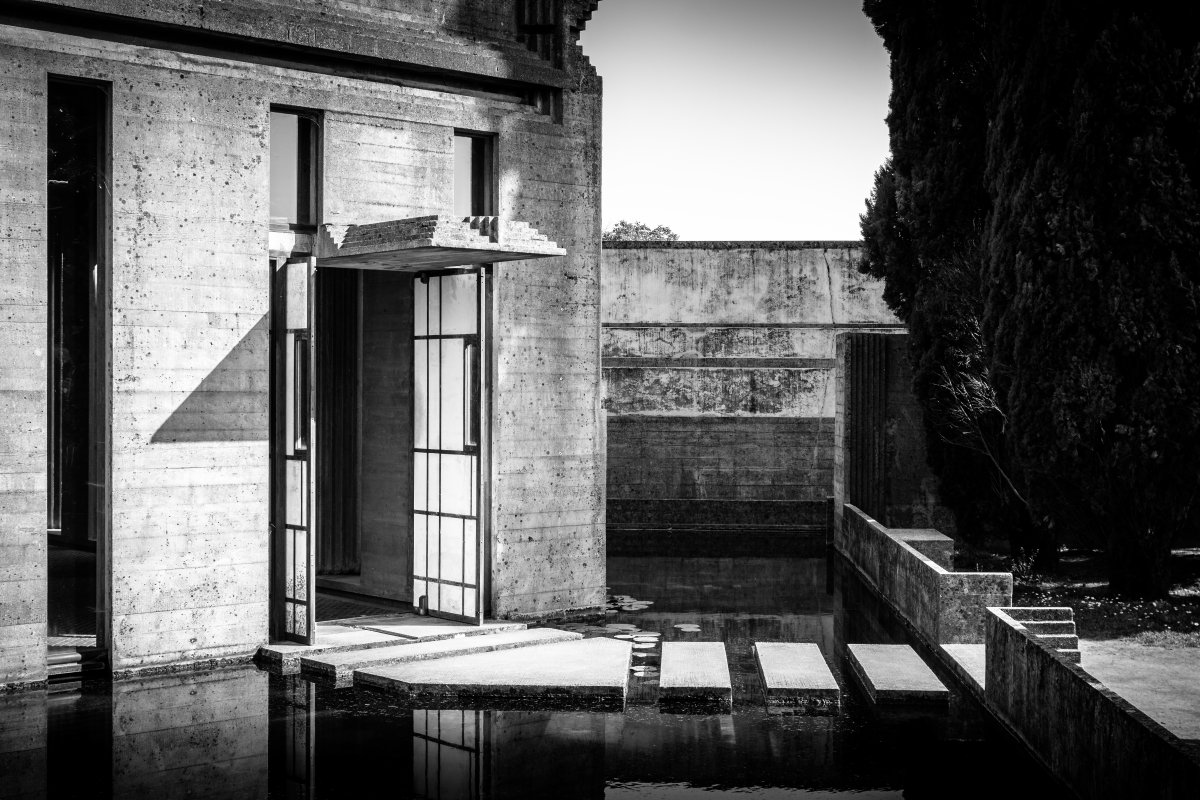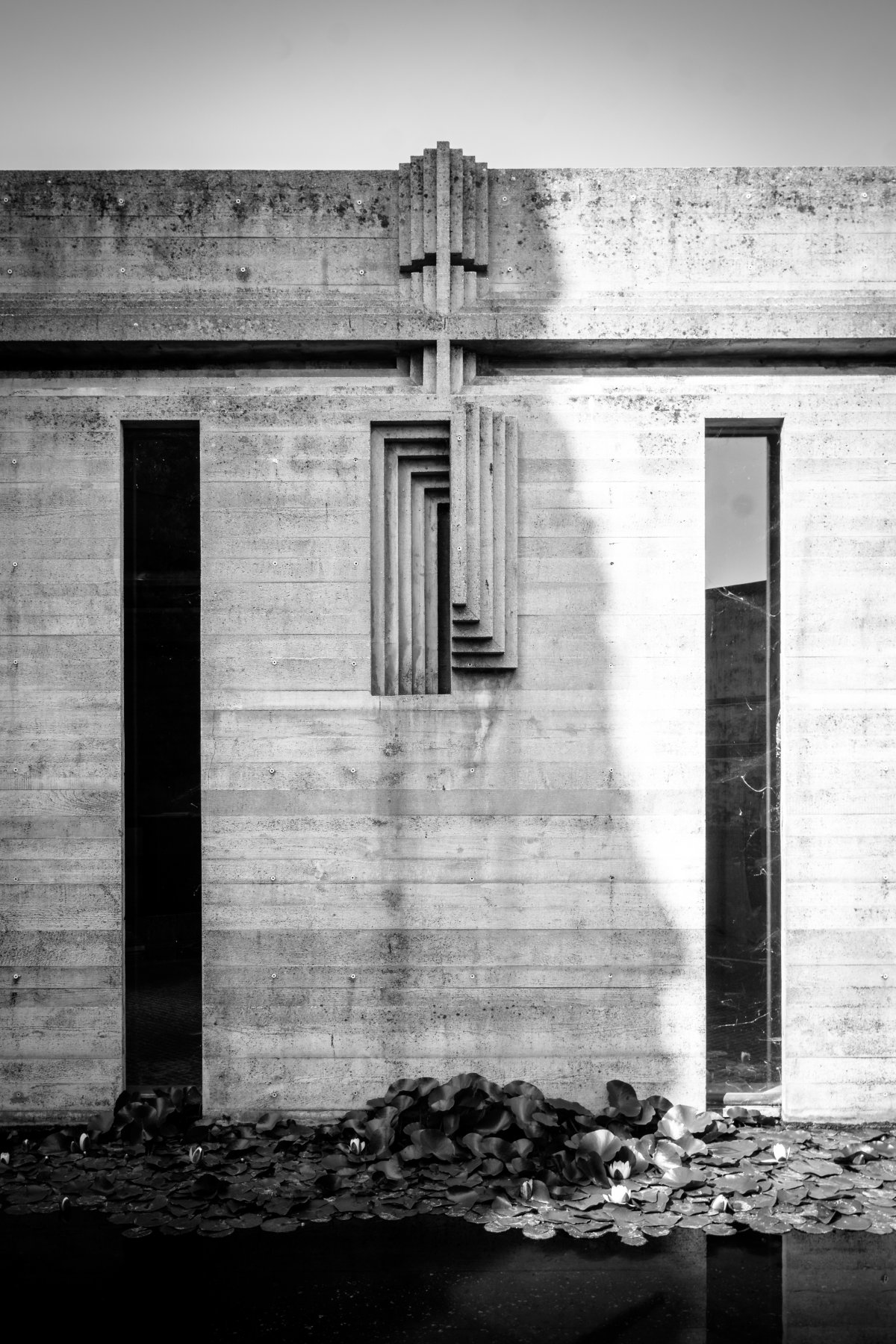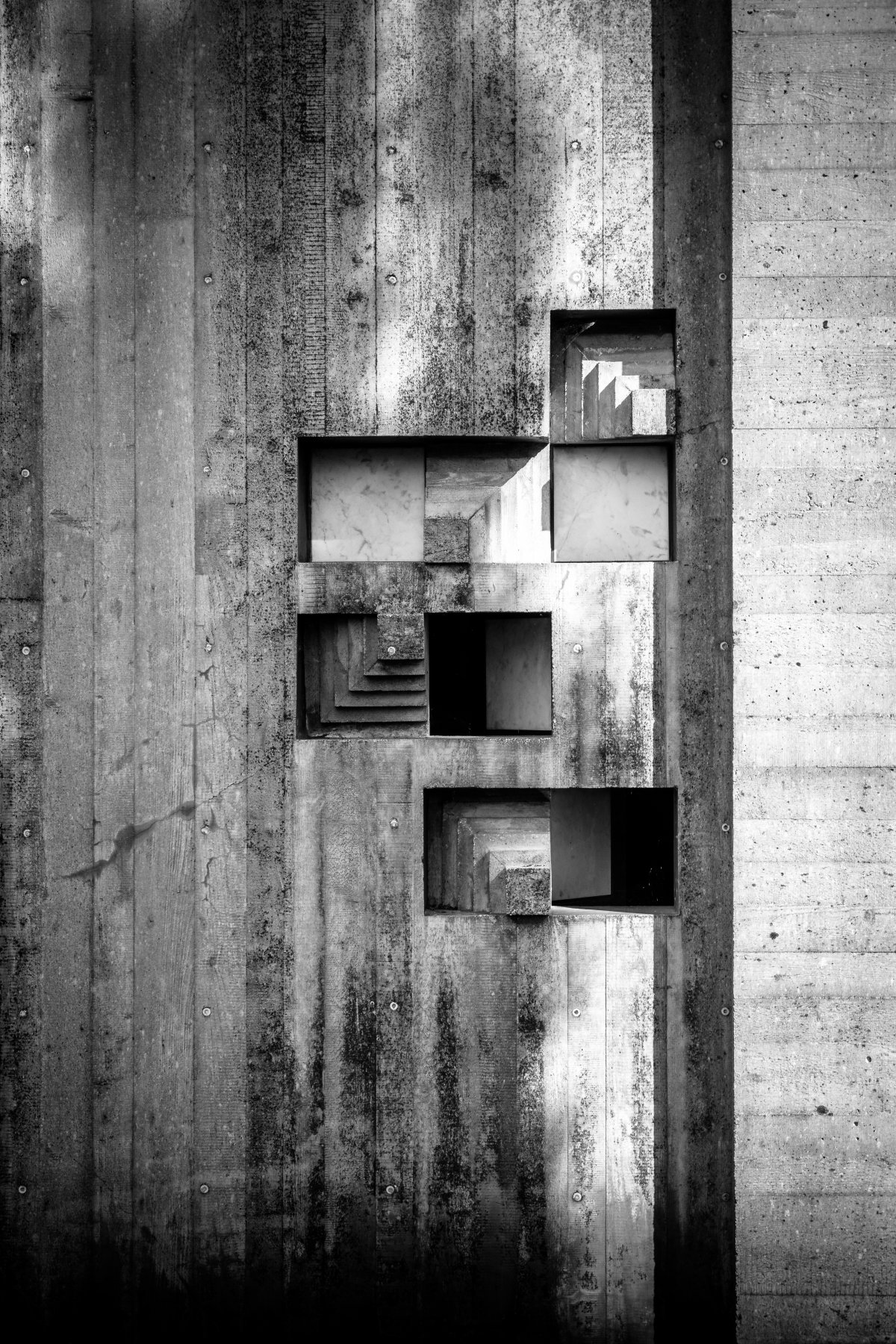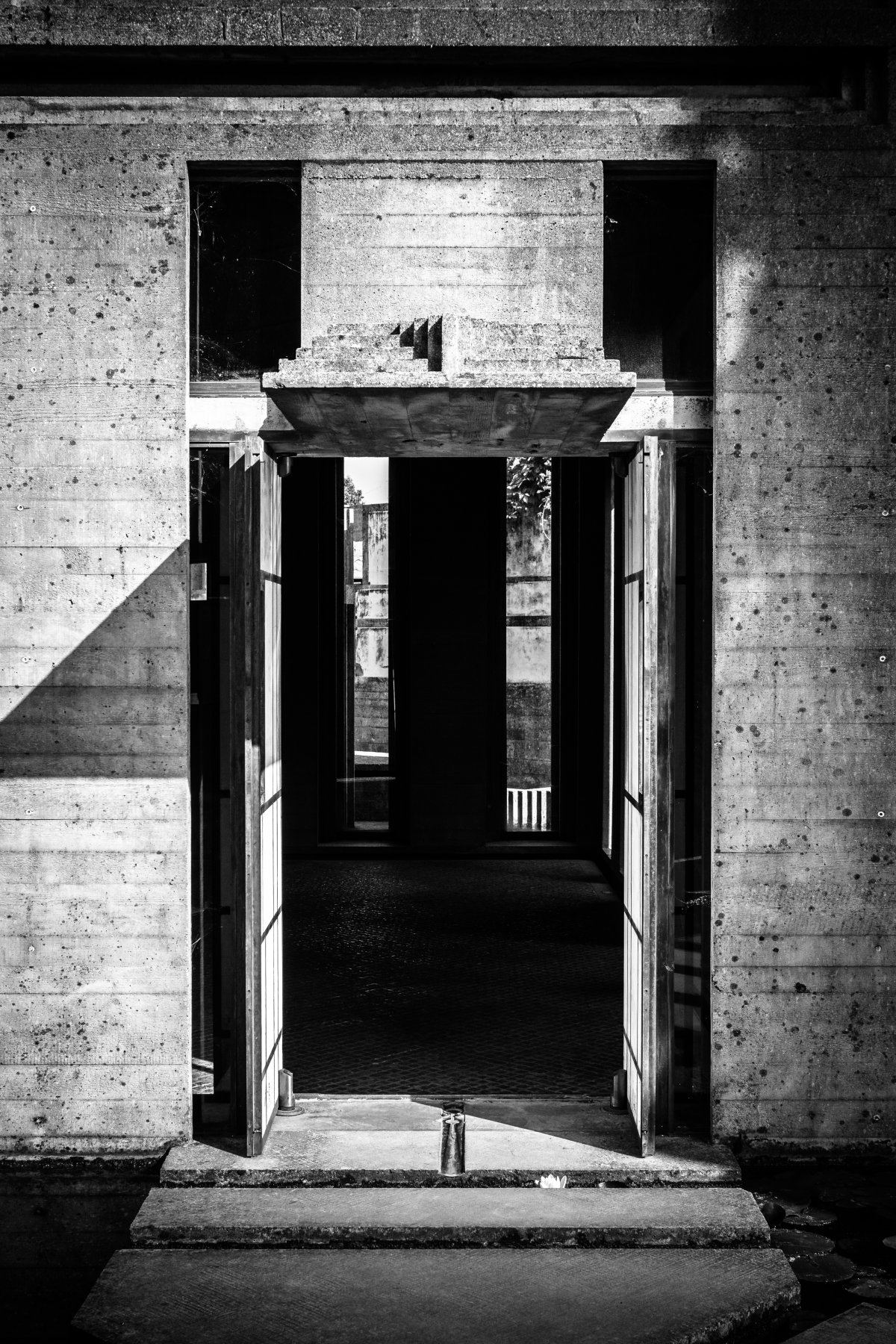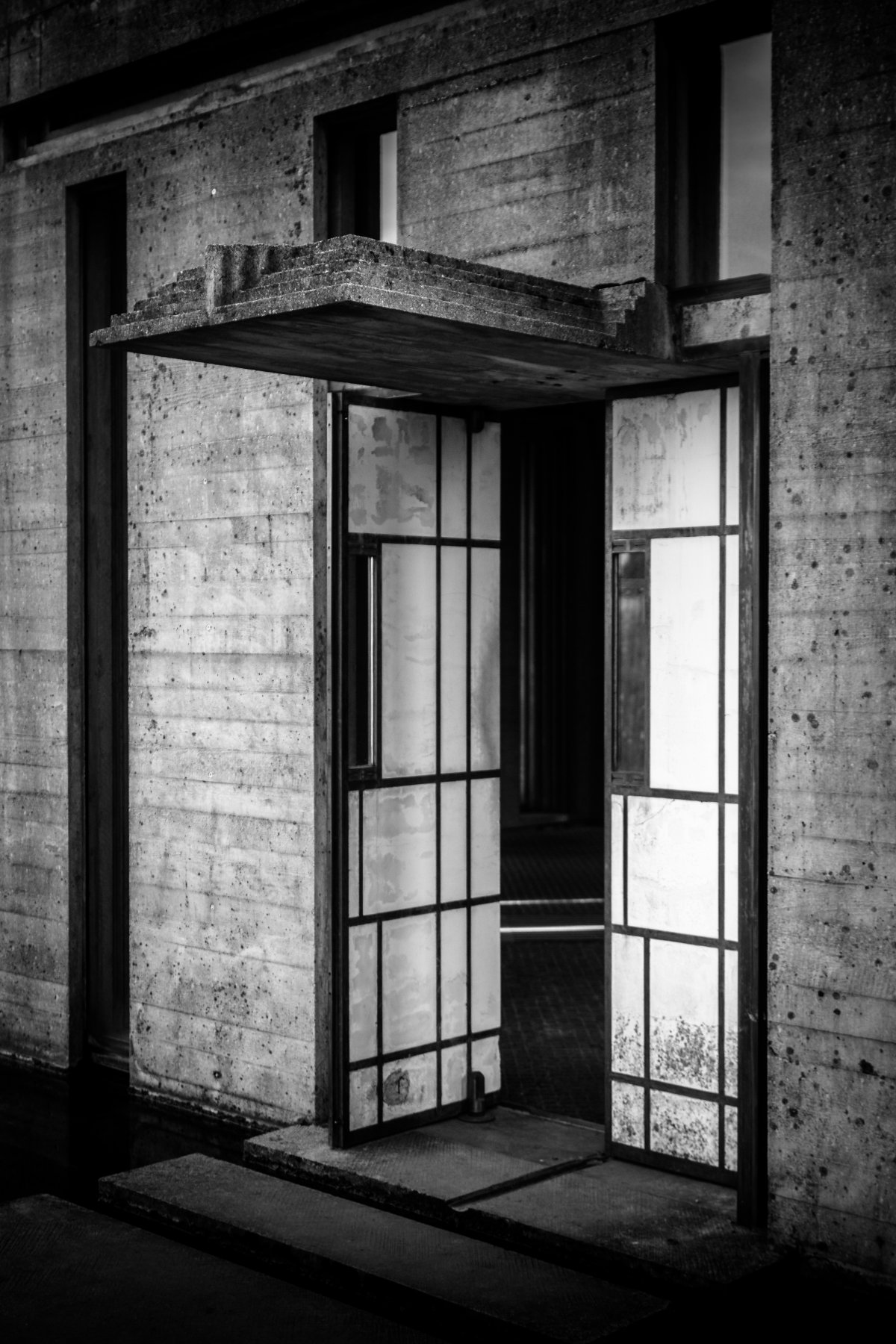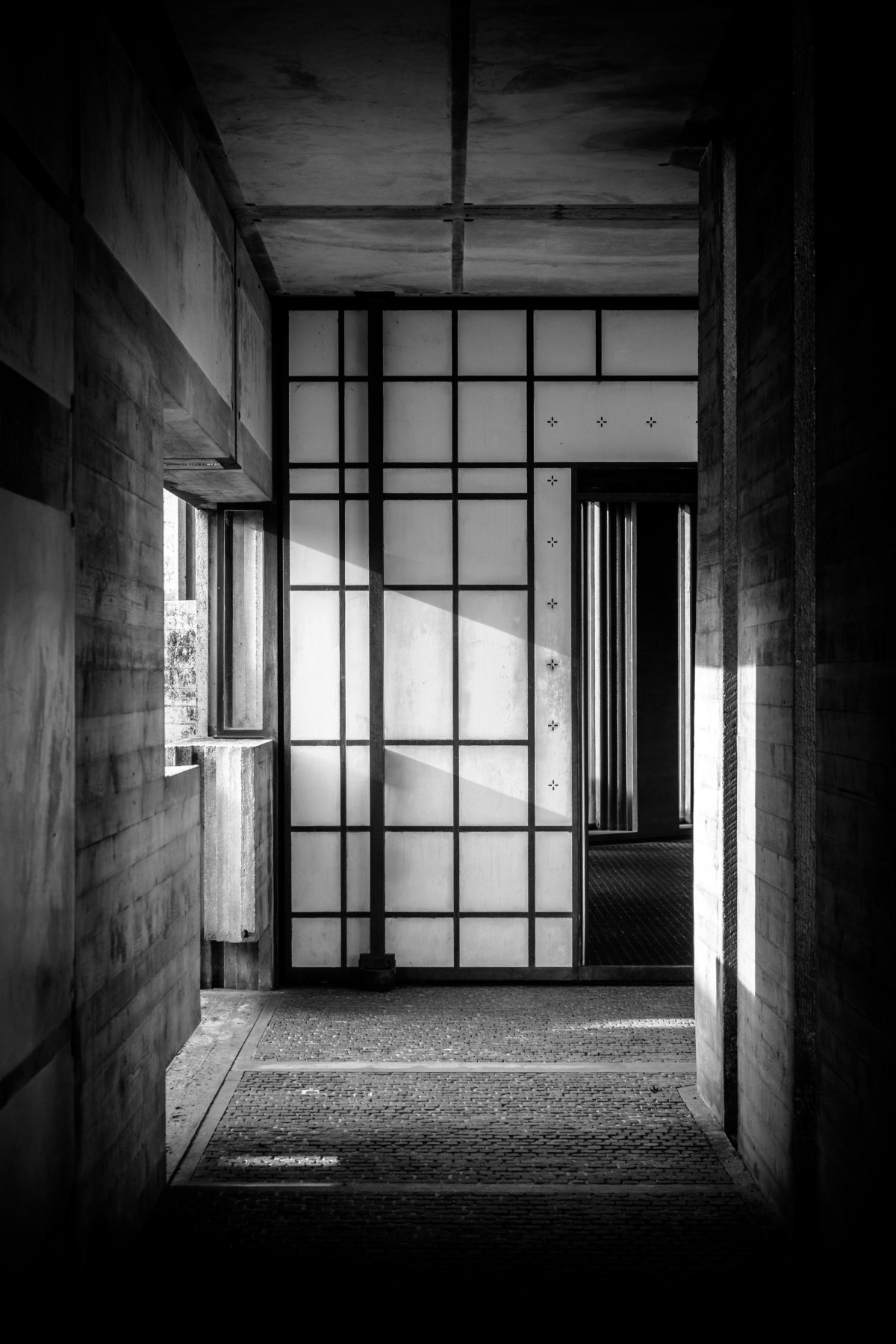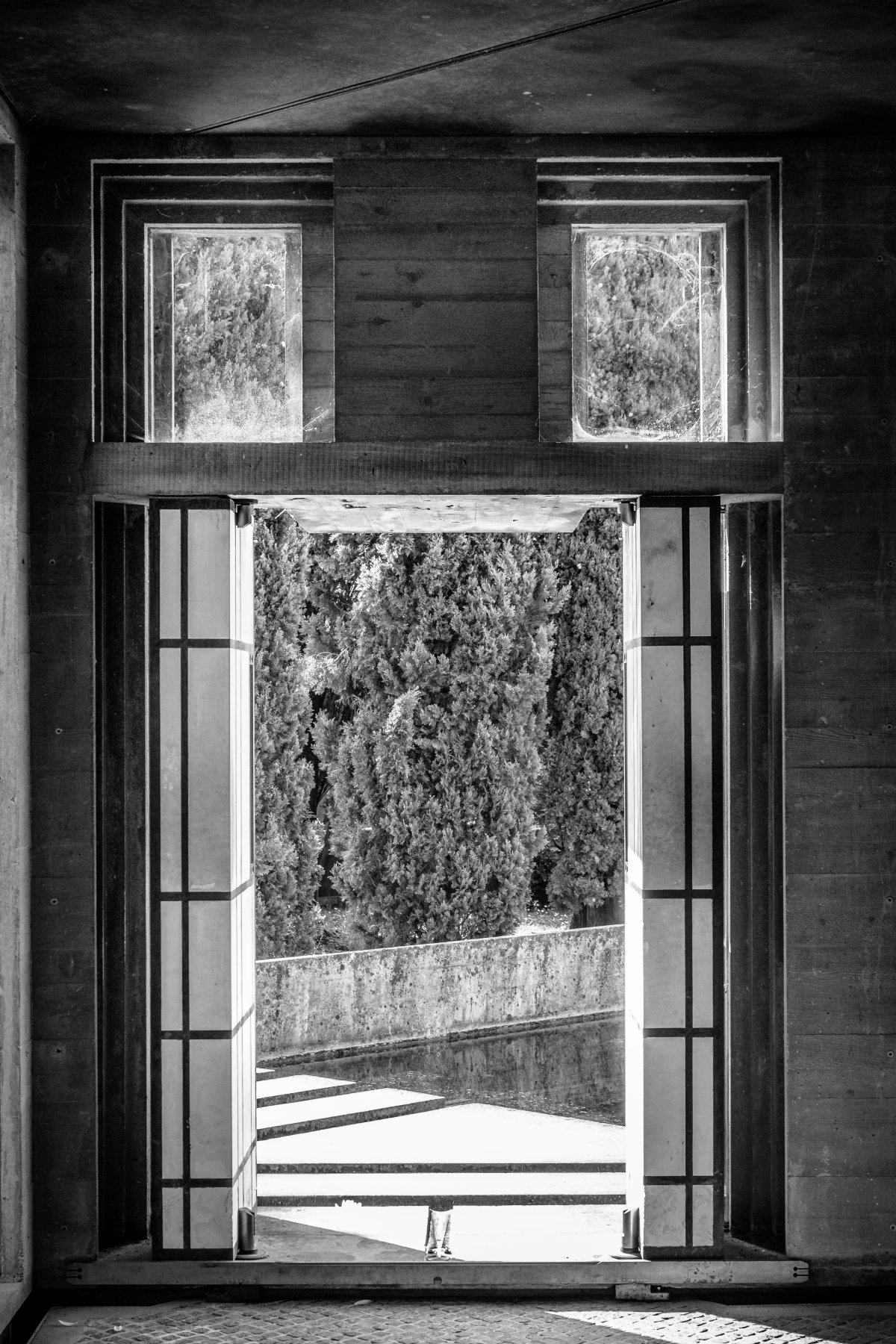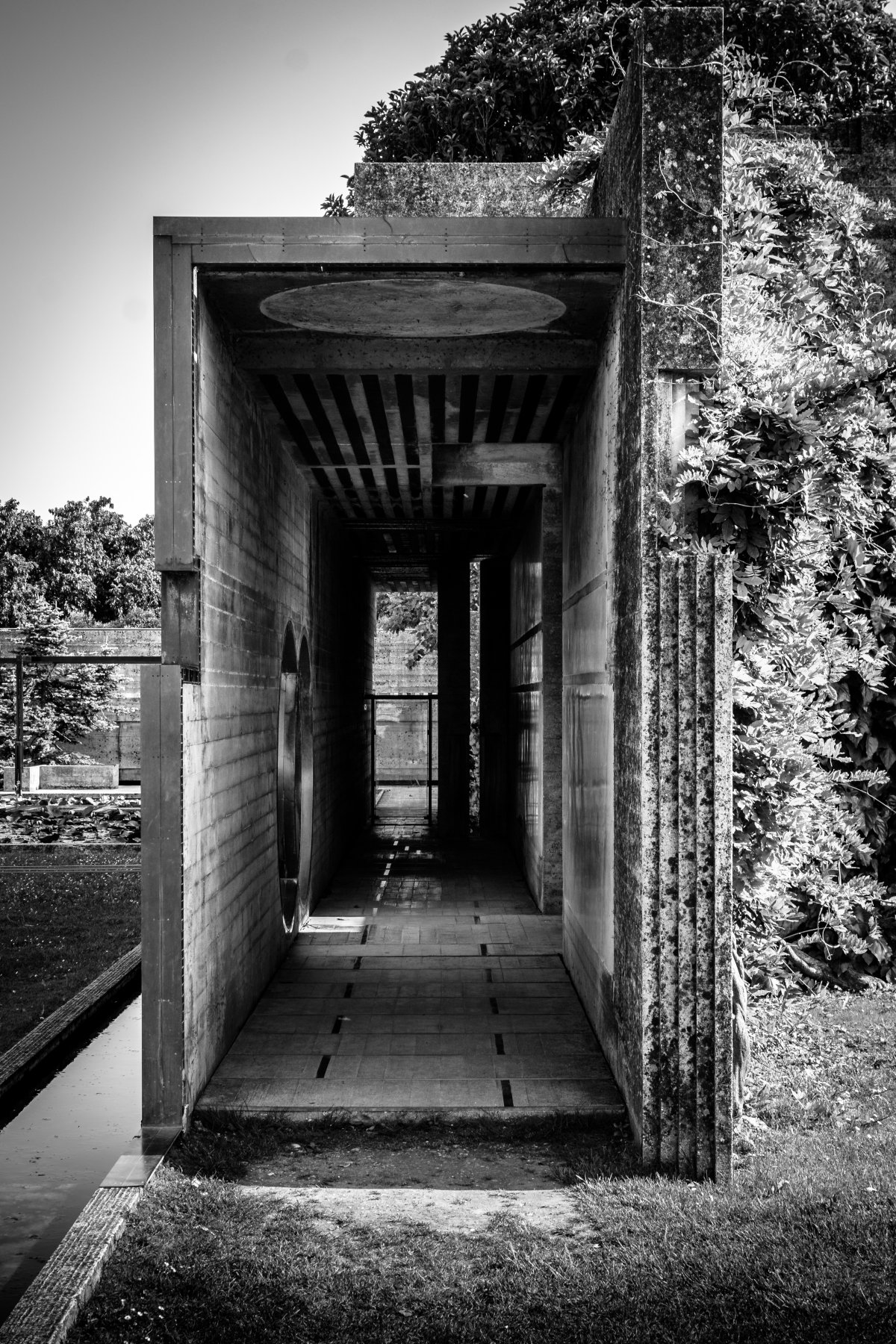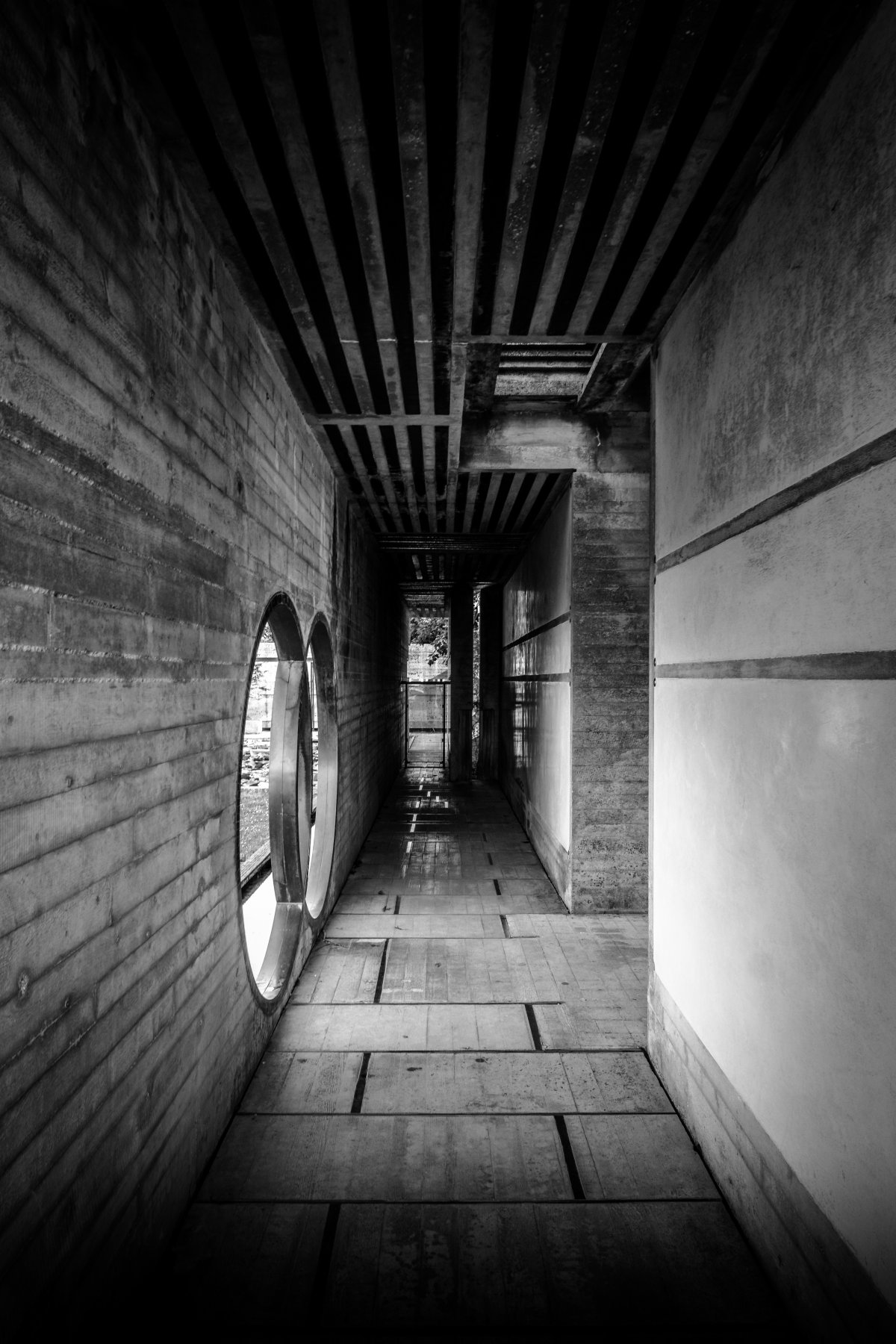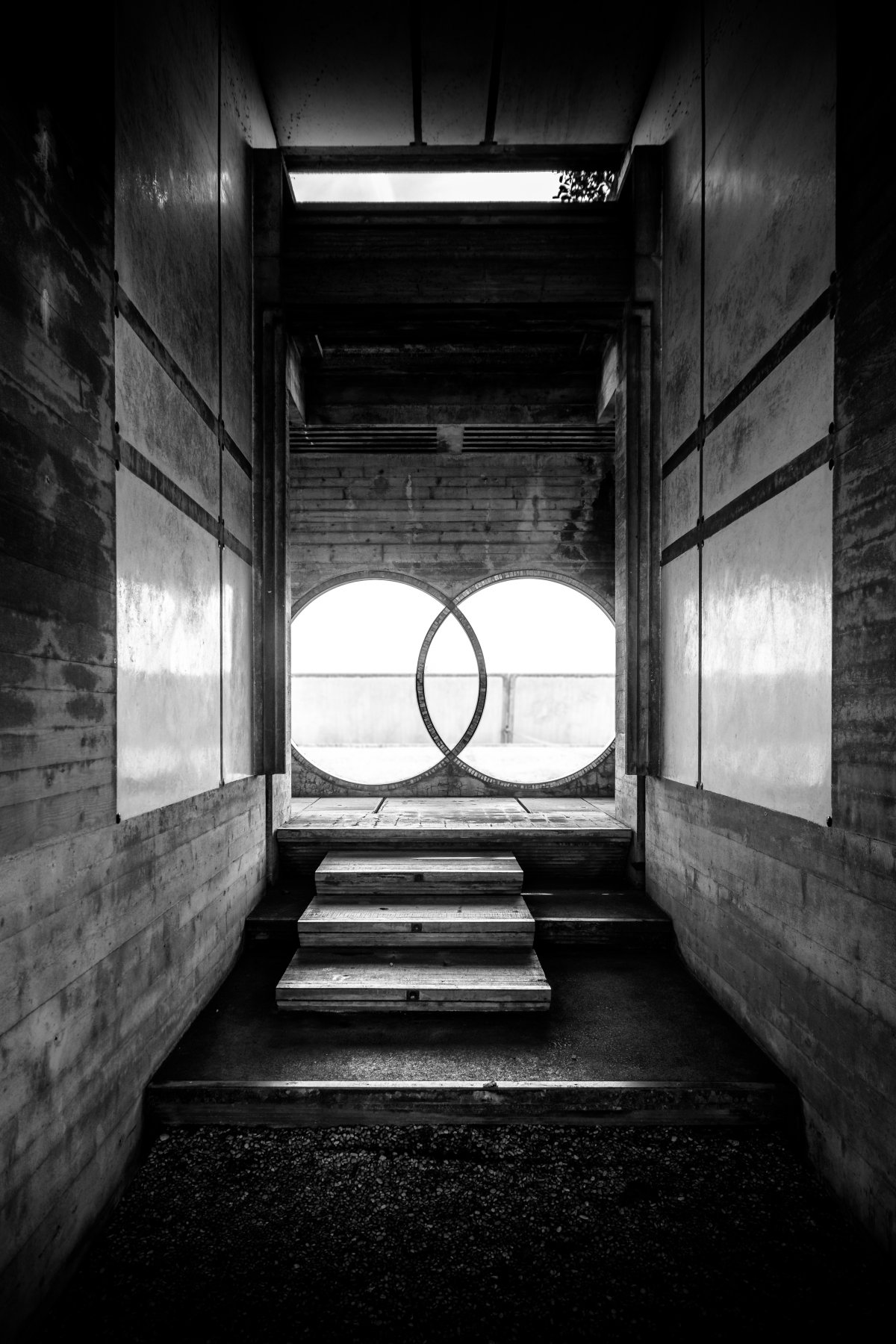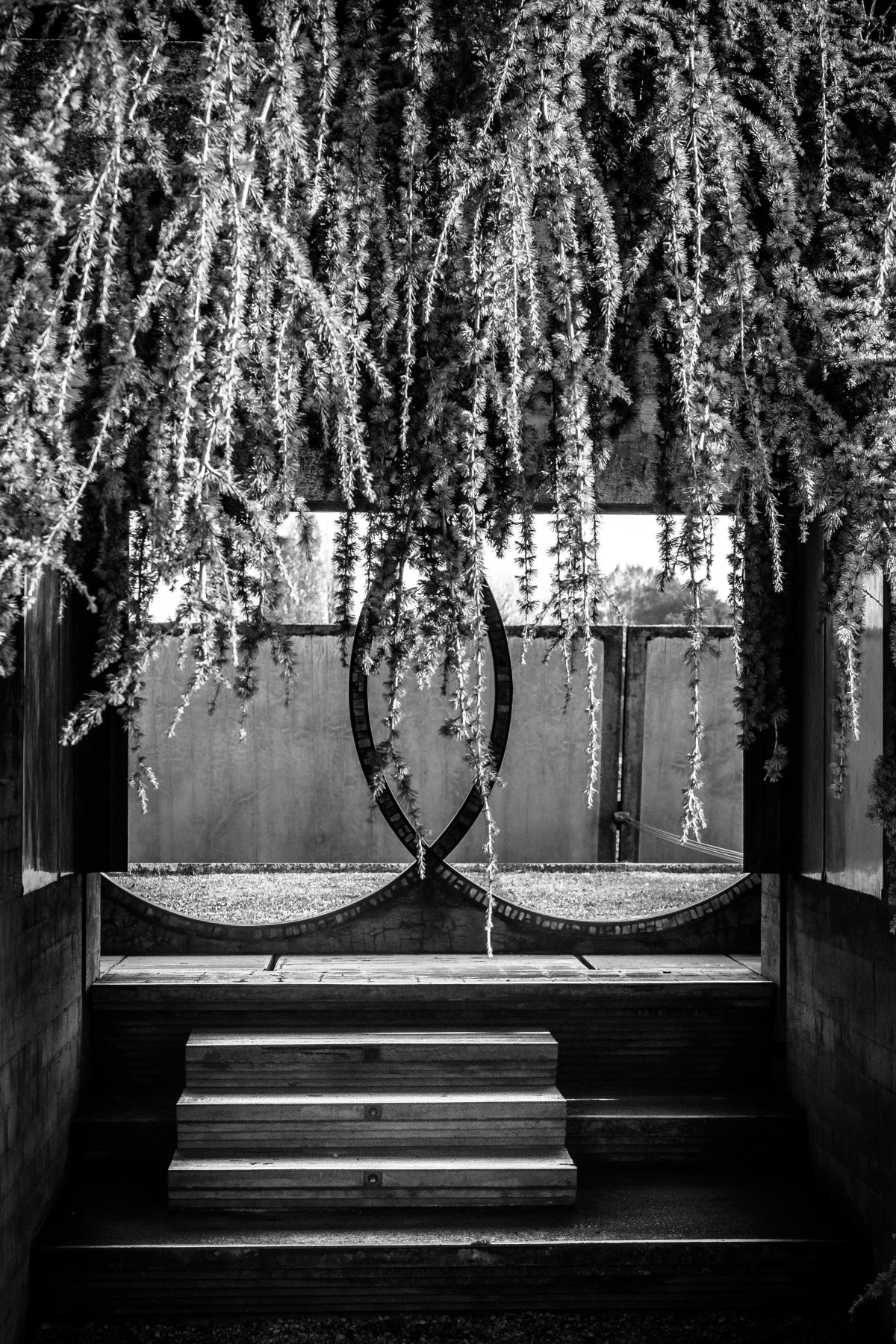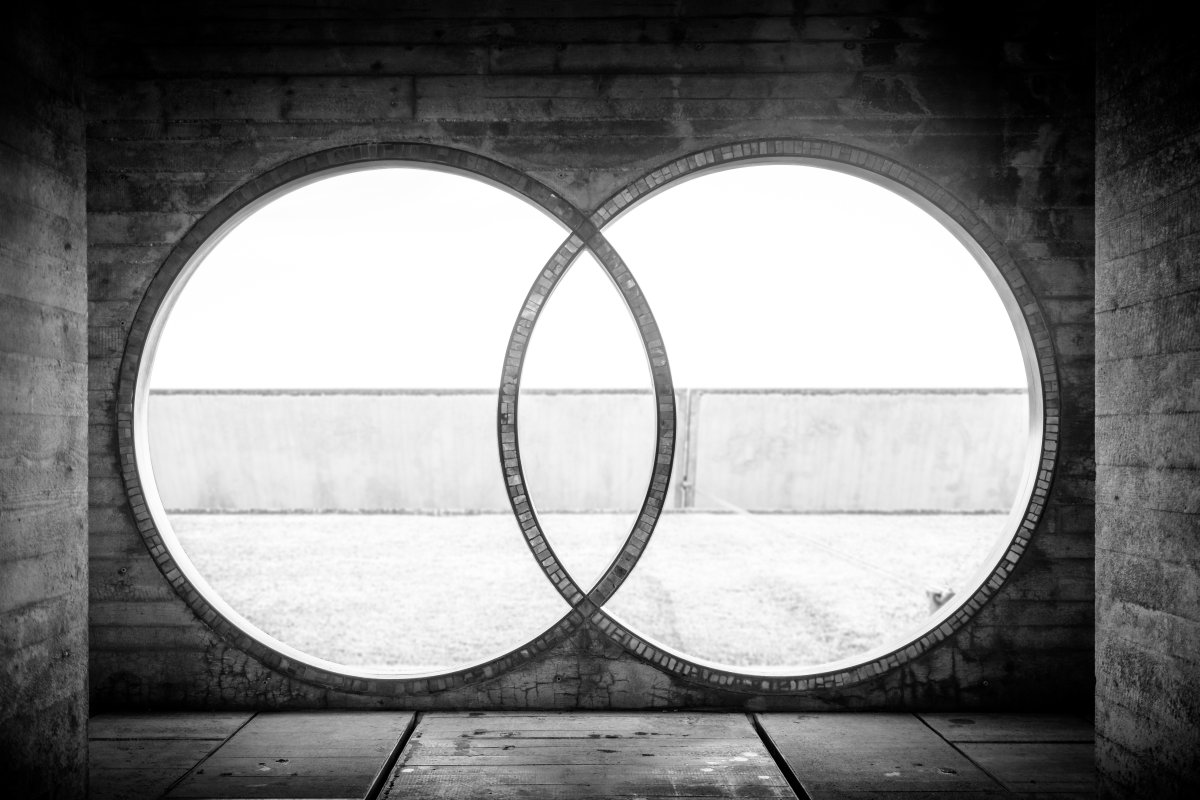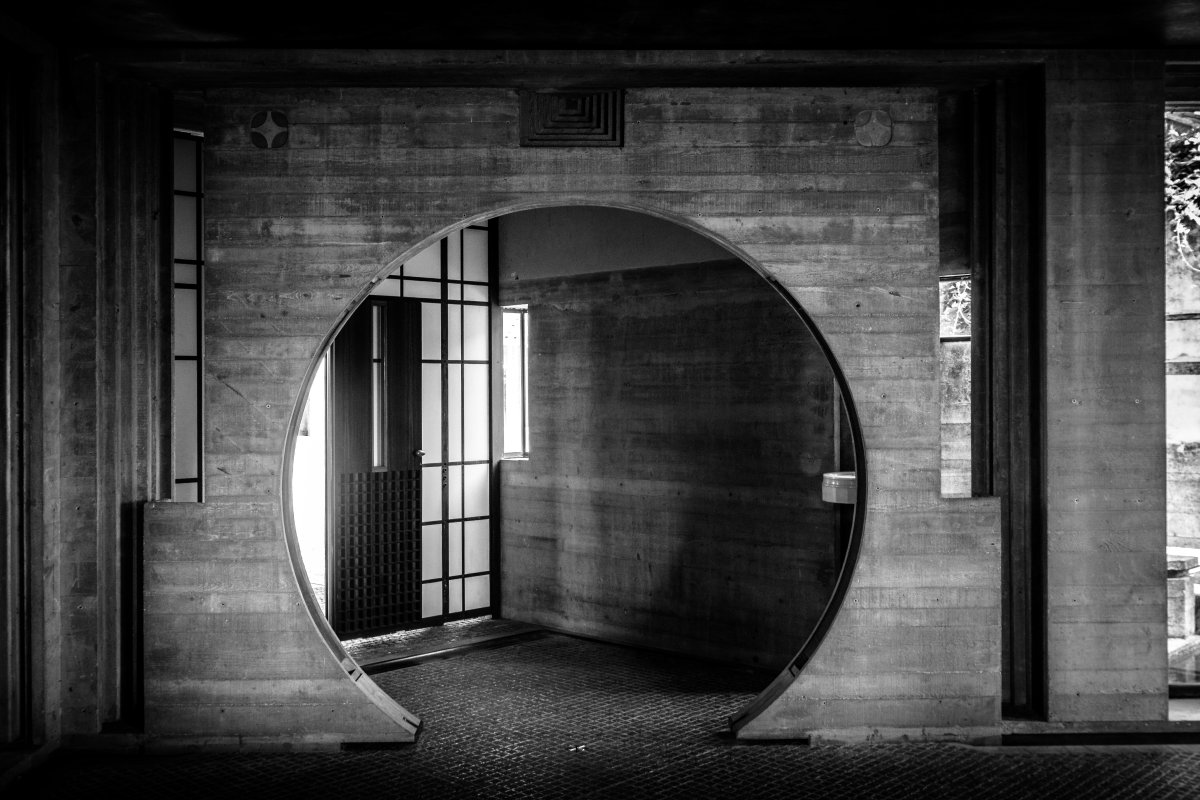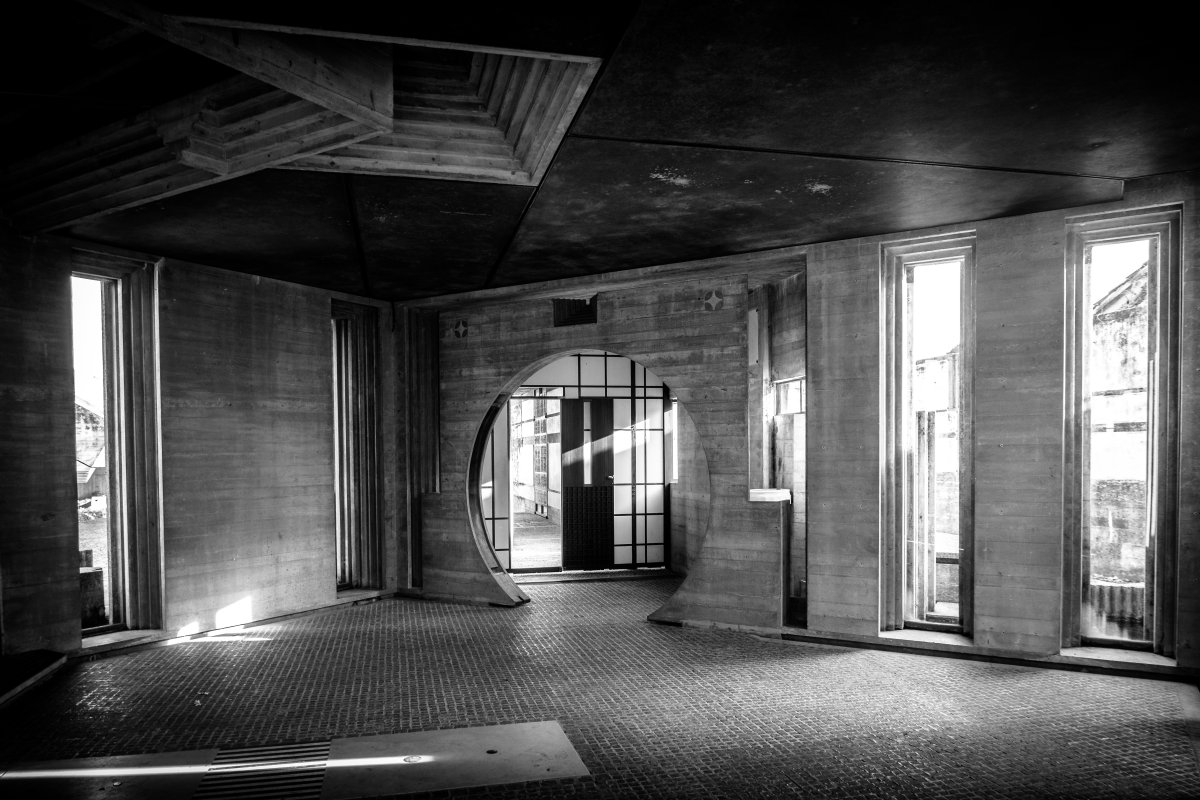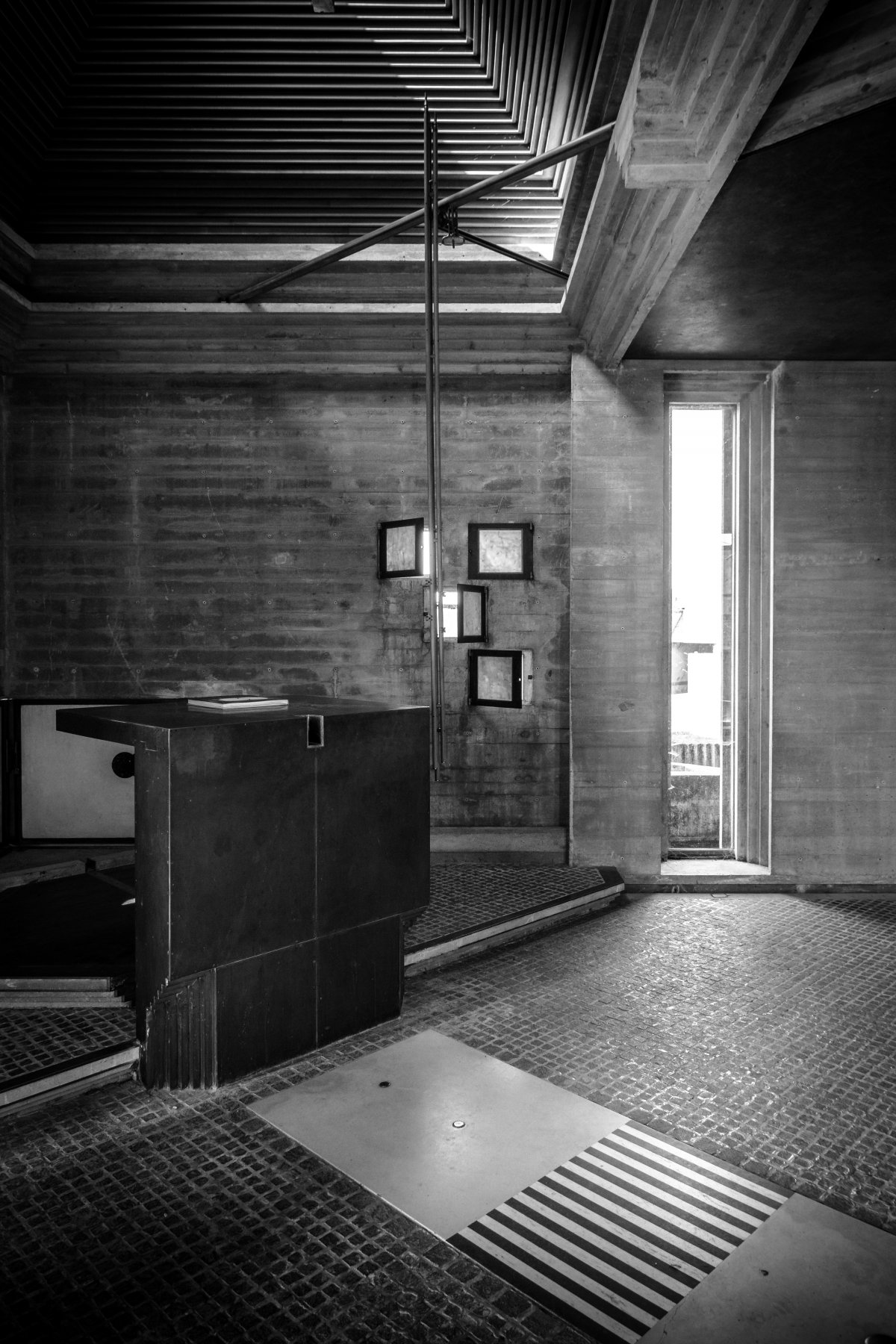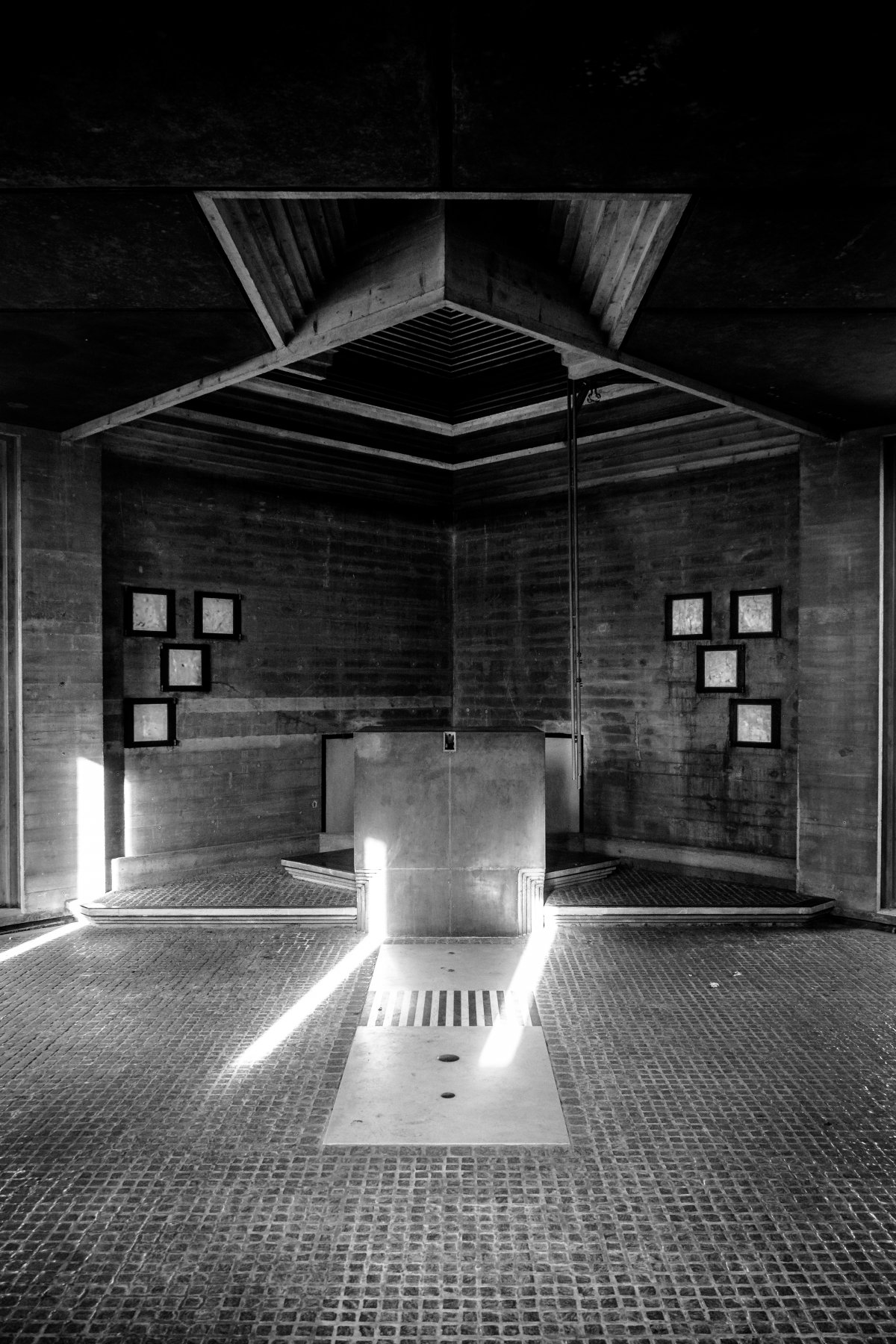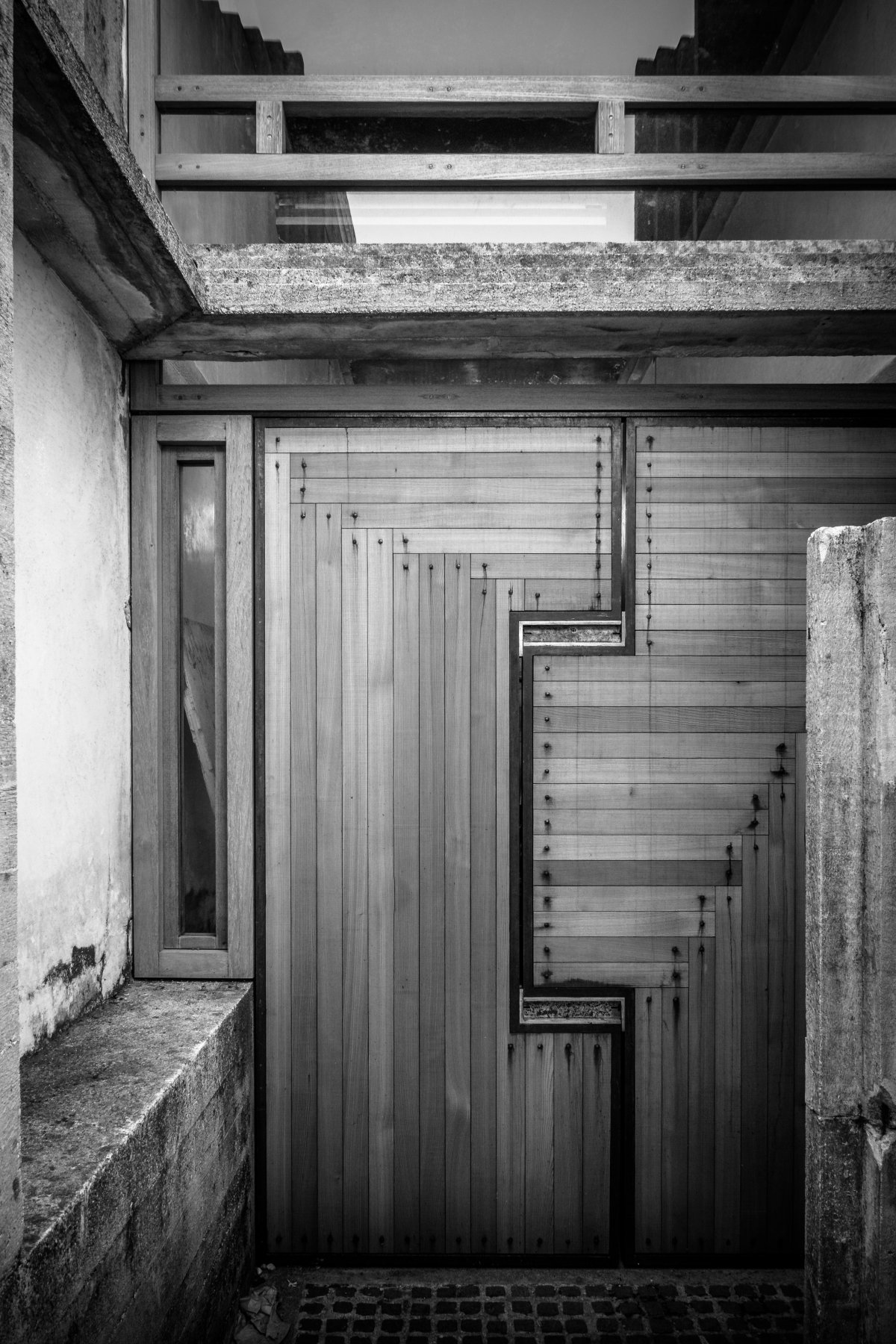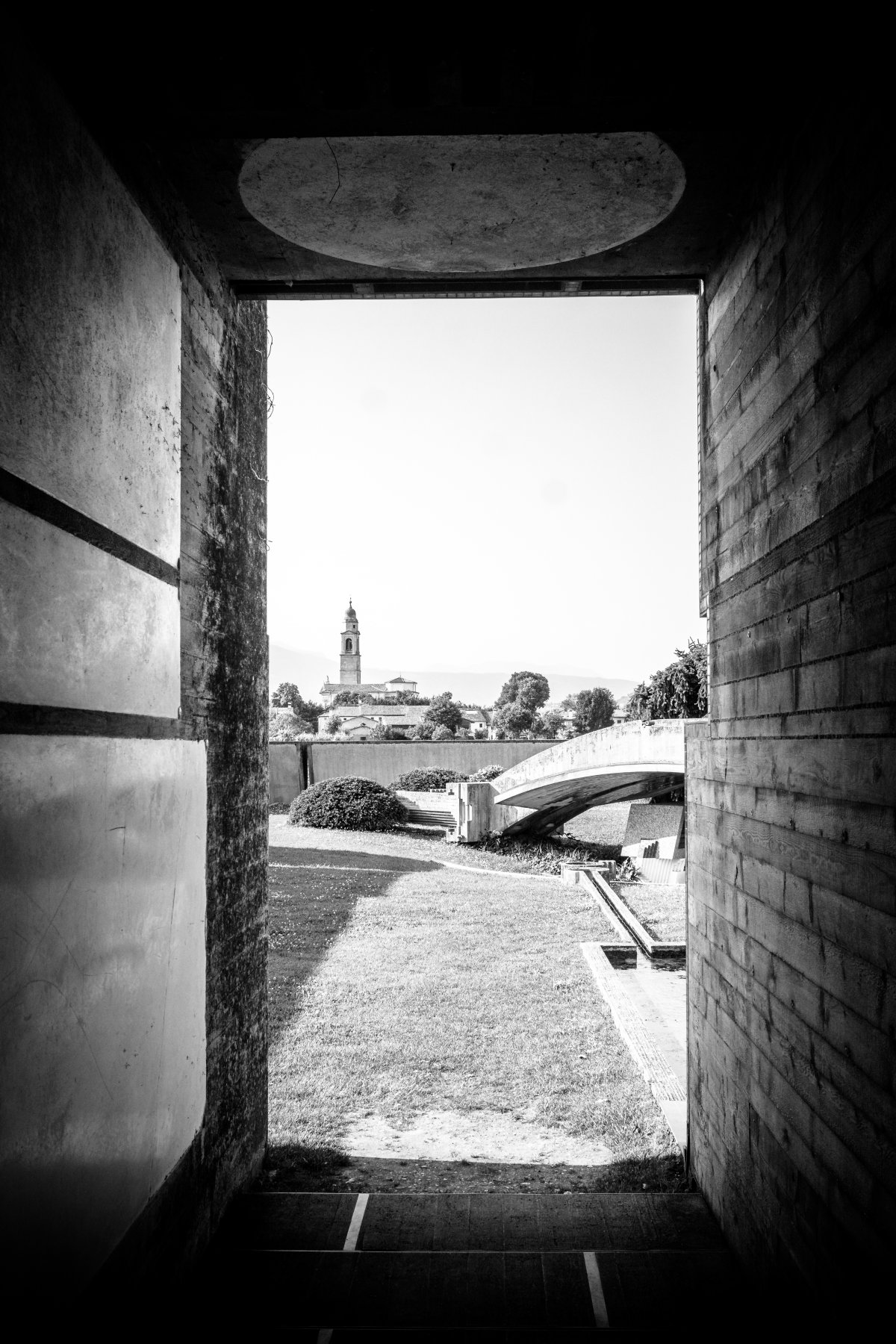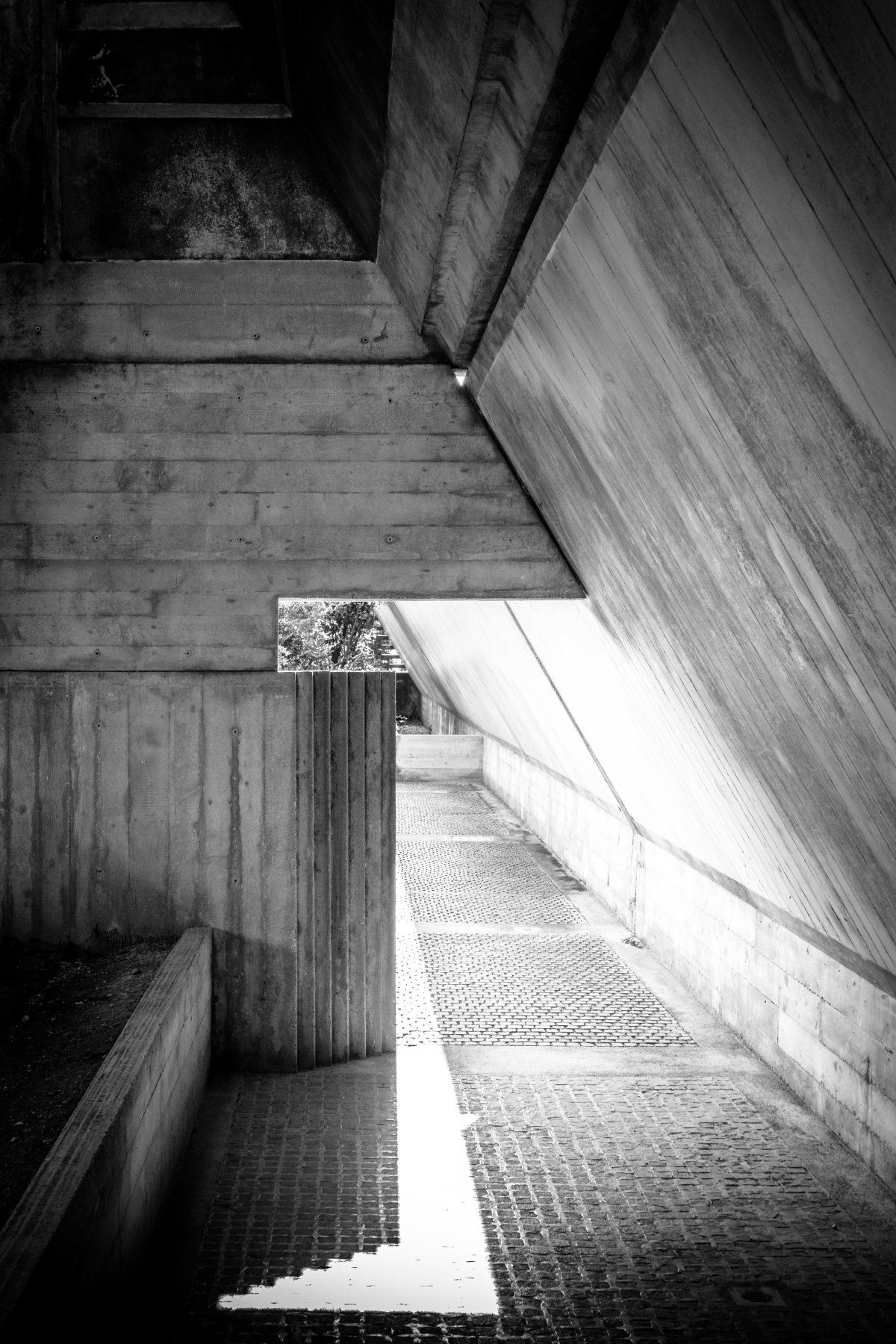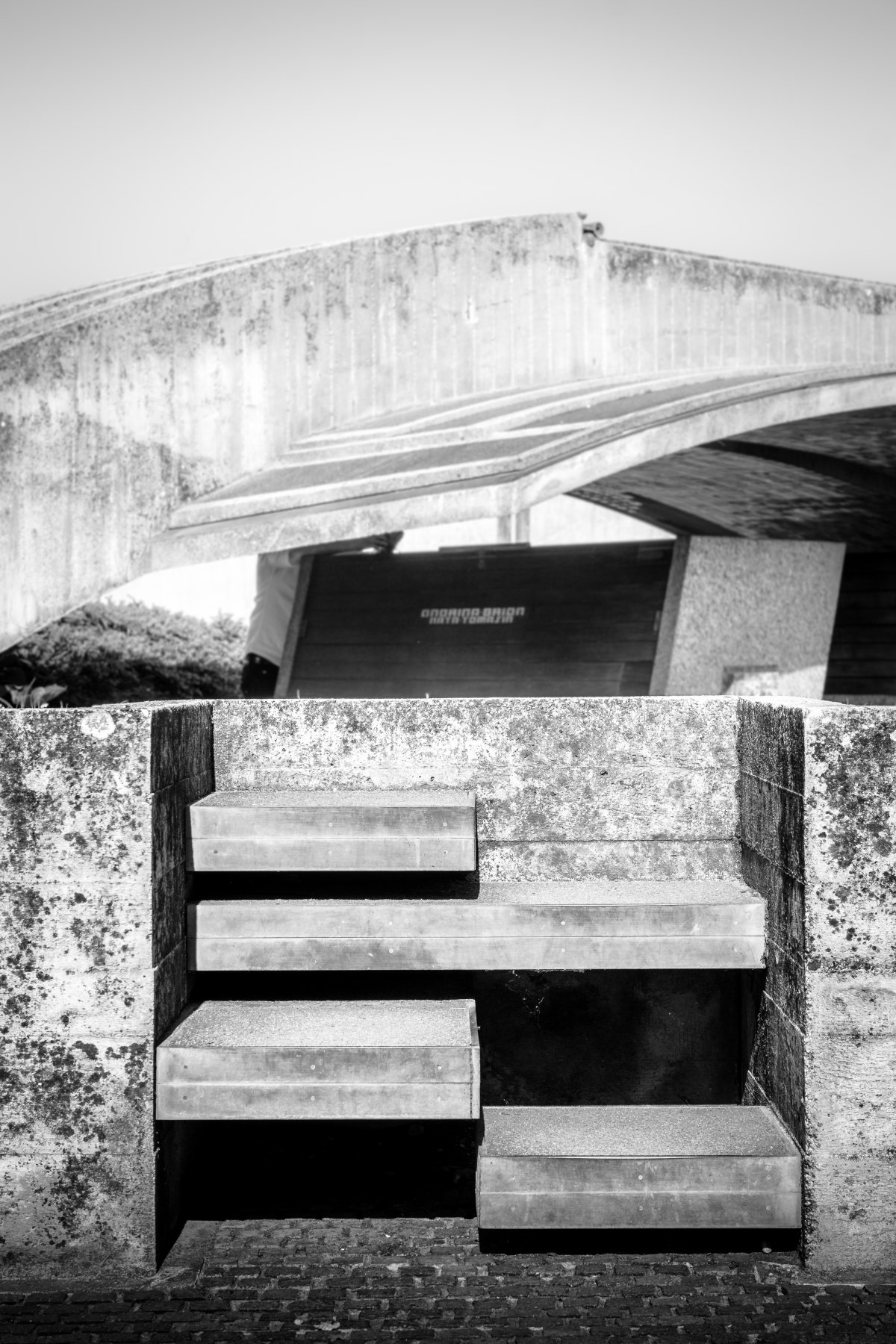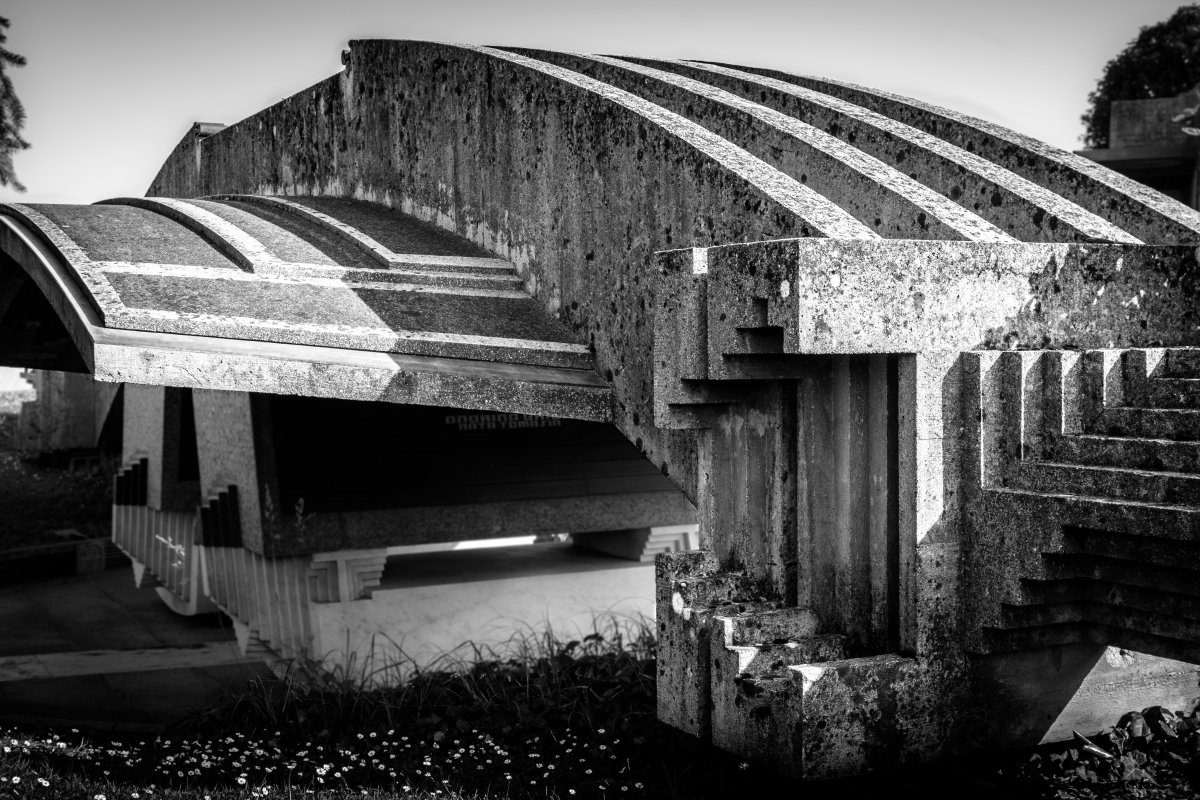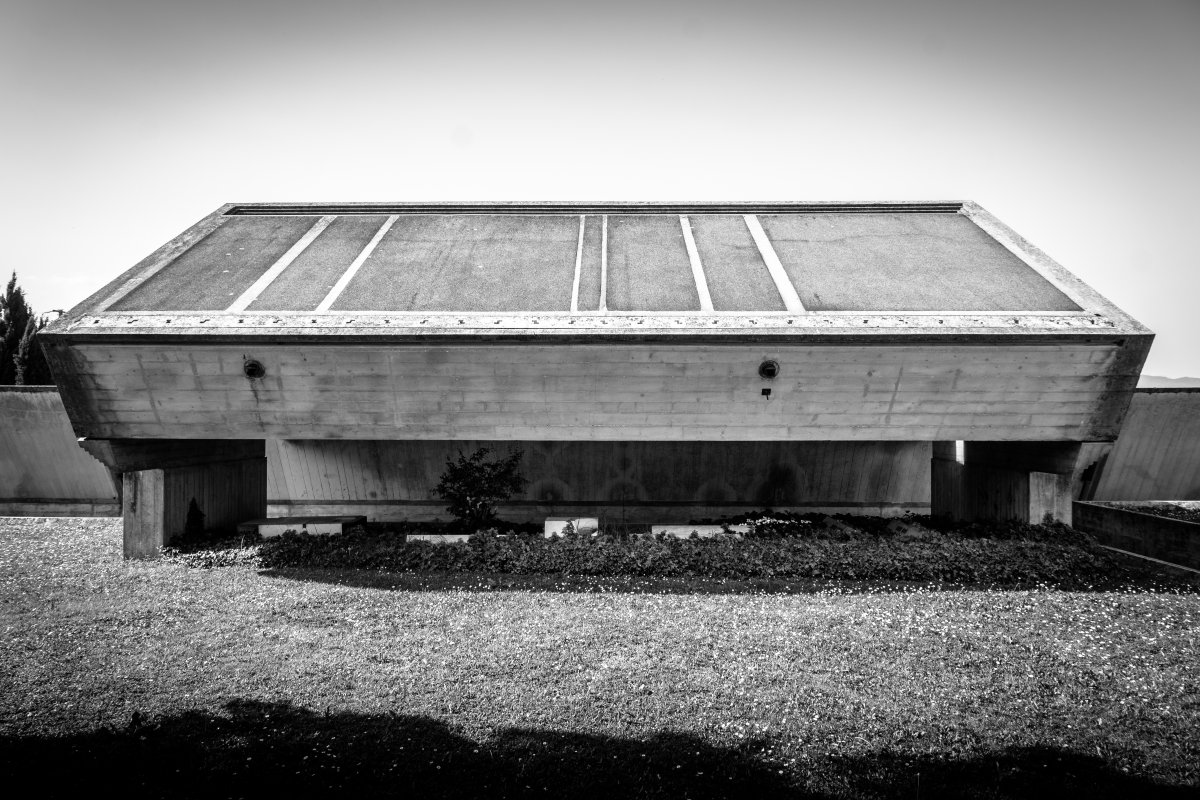
Tomba Brion Photo by Jacopo Famularo
Carlo Scarpa's Tomba Brion is an evocative meditation on life and death. Tombs are built in memory of those buried below, but they can also be places of more general reflection. In a cemetery in a remote village, toward the foothills of the Dolomites, Carlo Scarpa built a poetic mausoleum that anyone entering it could communicate with.
In Tomba Brion, the complexity of form and detail makes it a space where one can feel time, or the passing of time and light. As Scarpa writes, "It is a place where a sense of formal poetry can emanate. I love everything inside, the walls, the location, the relationship with the 'folk' cemetery, the different systems of flowing water thought, the Beton architecture, the geometric form and the connection with time, life and death, the intersection of the two circles, the graves of The Brion couple... "
Carlo Scarpa envisioned a mausoleum that would both comfort the living and shelter the dead. As he put it: "I want to show you some ways that you can approach death in a social and civic way. His 2,200-square-metre site is a collection of concrete elements, gardens and water features, connected by slender walkways. The effect is a kind of formal poetry. "It seems to me to be the greatest metaphysical work in architecture and landscape of the 20th century. His genius was to build a monument that inspired extraordinarily deep thinking without a hint of morbid feeling." Richard Murphy, an architect and academic authority on Scarpa.
- Architect: Carlo Alberto Scarpa(1906-1978)
- Photos: Jacopo Famularo
- Words: Qianqian

